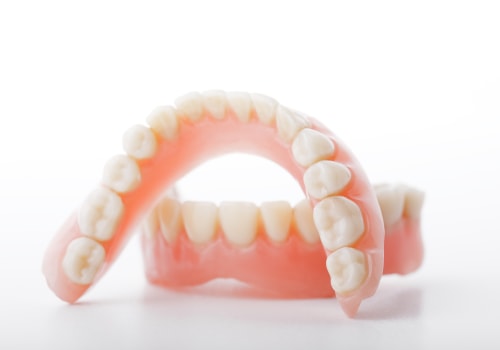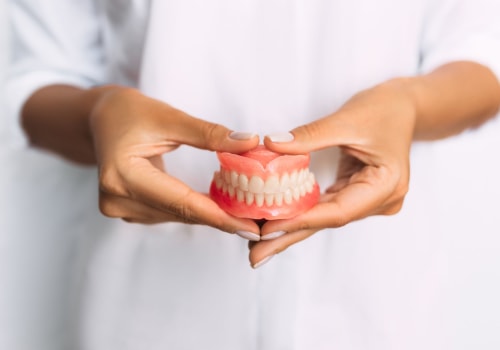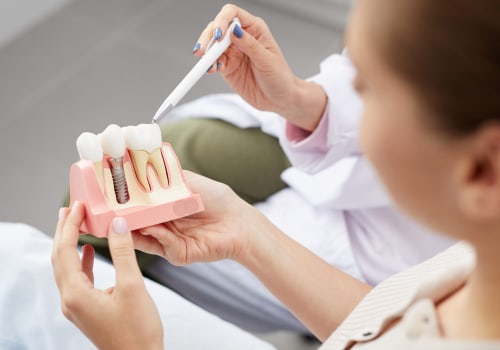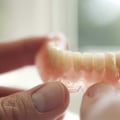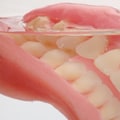Are you or a loved one in need of dentures? Are you looking for a solution that is both comfortable and flexible? Look no further than flexible partial dentures. These innovative dentures provide a customizable and natural-looking option for those who have lost some or all of their teeth. In this comprehensive article, we will dive into the world of flexible partial dentures and explore everything you need to know about this type of permanent denture. Whether you are new to the world of dentures or are familiar with traditional removable dentures, this article will provide valuable information on the benefits and considerations of flexible partial dentures. So, sit back, relax, and let us guide you through the world of flexible partial dentures. Welcome to our comprehensive look at flexible partial dentures.
In this article, we'll discuss everything you need to know about this type of denture and how it differs from other types of dentures. Whether you're considering permanent or removable dentures, understanding the pros and cons of flexible partial dentures is crucial in making an informed decision. Flexible partial dentures are a type of denture that is made from a lightweight, flexible material such as nylon or thermoplastic. Unlike traditional dentures that are made from acrylic or porcelain, flexible partial dentures are designed to be more comfortable and durable. One of the main benefits of using flexible partial dentures is their durability. The flexible material used in these dentures allows them to withstand wear and tear better than traditional dentures.
This means that they are less likely to break or require frequent repairs, making them a cost-effective option in the long run. In addition, the flexibility of these dentures provides a higher level of comfort for the wearer. Traditional dentures can often be bulky and uncomfortable, causing irritation and soreness in the mouth. Flexible partial dentures, on the other hand, are designed to fit snugly and comfortably in the mouth, making them easier to wear for longer periods. Another advantage of flexible partial dentures is their aesthetic appeal. The flexible material used in these dentures allows for a more natural-looking appearance, as they can be customized to match the color and shape of your natural teeth.
This makes them a popular choice for those who are concerned about their appearance while wearing dentures. When it comes to permanent dentures, flexible partial dentures can play a crucial role. They can be used as an alternative to traditional acrylic or porcelain dentures, providing a more comfortable and durable option for those who require permanent dentures. Additionally, they can be used in conjunction with dental implants to improve stability and functionality. For those who require removable dentures, flexible partial dentures can also be a suitable option. They are lightweight and easy to remove, making them a convenient choice for those who prefer to take their dentures out at night.
However, it is important to note that regular cleaning and maintenance is still necessary to keep your flexible partial dentures in good condition. As with any type of dental procedure, there are potential risks and complications associated with flexible partial dentures. These include discomfort or soreness in the mouth, gum irritation, and difficulty speaking or eating. It is essential to consult with your dentist before getting flexible partial dentures to discuss any potential risks and how to manage them. To better understand the benefits of flexible partial dentures, here are a few examples:
- A patient who was previously unable to wear traditional dentures due to discomfort found relief with flexible partial dentures.
- Aging patients with weaker jawbones can benefit from the lightweight and flexible material of these dentures.
- Flexible partial dentures can be a more affordable option for those on a budget.
We hope this article has provided you with valuable insights into flexible partial dentures and helped you make an informed decision about your dental health.
Risks and Complications
When considering any type of dental procedure, it's important to understand the potential risks and complications involved. Flexible partial dentures are no exception. While they offer many benefits, there are some factors to be aware of before making a decision. One potential risk of flexible partial dentures is allergic reactions. These dentures are made of a special type of plastic called thermoplastic resin, which some people may be allergic to.If you have a known allergy to this material, it's important to discuss alternative options with your dentist. Another complication to consider is the fit of the denture. While flexible partial dentures are designed to be more comfortable than traditional rigid dentures, they may not fit as securely in your mouth. This can lead to issues with eating and speaking, and may require adjustments or replacements over time. In some cases, patients may also experience irritation or soreness from the flexible material rubbing against their gums. This can be addressed by using dental adhesive or adjusting the fit of the denture. Additionally, flexible partial dentures may not be as durable as other types of dentures.
The material is softer and more prone to wear and tear, which can result in cracks or breaks over time. It's important to properly care for your dentures and replace them as needed to avoid any potential complications.
What Are Flexible Partial Dentures?
If you're considering dentures, you may have come across the term flexible partial dentures. These are a type of removable denture that are designed to be more comfortable and natural looking than traditional dentures. But what exactly are they and how do they differ from other types of dentures?To understand flexible partial dentures, it's important to first understand the basics of traditional dentures.Traditional dentures are typically made of a hard acrylic resin material and are held in place by suction or adhesive. While they can restore function and appearance to the mouth, they can also be uncomfortable and bulky.
Flexible partial dentures
, on the other hand, are made from a more pliable material called thermoplastic resin. This makes them more flexible and lightweight, allowing for a better fit and increased comfort. They also blend in more seamlessly with your natural gums and teeth, making them less noticeable. Another key difference between traditional and flexible partial dentures is the way they are held in place.Traditional dentures rely on suction or adhesive, while flexible partial dentures have small clasps that attach to existing teeth for stability. If you're someone who is looking for a more natural-looking and comfortable option for replacing missing teeth, flexible partial dentures may be a great choice for you. However, it's important to consult with your dentist to determine if they are the right fit for your individual needs.
Flexible Partial Dentures in Permanent and Removable Dentures
When it comes to replacing missing teeth, there are two main types of dentures available: permanent and removable. Both offer unique benefits and have their own set of considerations to take into account. However, for those who are looking for a more flexible option, flexible partial dentures are available in both types. These specialized dentures are designed to provide a comfortable and natural fit while also allowing for some flexibility in movement.This makes them an ideal choice for those who may have difficulty adjusting to the rigid structure of traditional dentures. In permanent dentures, flexible partial dentures serve as a long-term solution for missing teeth. They are made from a durable, lightweight material that is resistant to staining and wear and tear. They can be used to replace one or more missing teeth, providing a comfortable and secure fit that allows for easy eating, speaking, and smiling. In removable dentures, flexible partial dentures offer a similar level of comfort and flexibility. However, they can be easily removed for cleaning and maintenance, making them a convenient option for those who prefer to have more control over their dental hygiene. No matter which type of denture you choose, flexible partial dentures can play an important role in providing a natural-looking and functional solution for missing teeth.
They offer the best of both worlds - the stability and durability of traditional dentures with the added comfort and flexibility of a more modern design.
The Pros and Cons of Flexible Partial Dentures
Flexible partial dentures are a popular choice for individuals looking for a comfortable and natural-looking solution for missing teeth. These dentures are made of a flexible material, typically nylon, which allows for a more secure and snug fit in the mouth. In this section, we will discuss the benefits and drawbacks of flexible partial dentures, so you can make an informed decision about whether they are the right choice for you.The Pros of Flexible Partial Dentures
One of the biggest advantages of flexible partial dentures is their flexibility. This means that they can adapt to the natural movement of your mouth, making them more comfortable to wear compared to traditional rigid dentures.The flexible material also makes them less likely to break or crack, providing a longer lifespan for your dentures. Another benefit of flexible partial dentures is their appearance. They are designed to match the color and shape of your natural teeth, making them virtually indistinguishable from real teeth. This can boost your confidence and self-esteem, as you no longer have to worry about gaps in your smile.
The Cons of Flexible Partial Dentures
While there are many benefits to flexible partial dentures, there are also some drawbacks to consider. One common issue is that these dentures can be more expensive compared to other types of removable dentures.This is due to the higher cost of materials and the specialized manufacturing process required. Another potential drawback is that flexible partial dentures may not be as durable as other types of dentures. The flexible material can wear down over time, especially if not cared for properly. Additionally, they may not be suitable for individuals with certain dental conditions or those who grind their teeth. Overall, the pros and cons of flexible partial dentures are important to weigh when considering this type of denture. While they offer many benefits, they may not be the best option for everyone.
It is important to consult with your dentist to determine if flexible partial dentures are the right choice for your specific needs. In conclusion, flexible partial dentures offer a unique option for those seeking permanent or removable dentures. While they have their advantages, such as being more comfortable and aesthetically pleasing, they also have some drawbacks to consider. Understanding the role of flexible partial dentures in both types of dentures is crucial in making the right decision for your oral health. We hope this article has provided valuable information to help you in your decision-making process.

